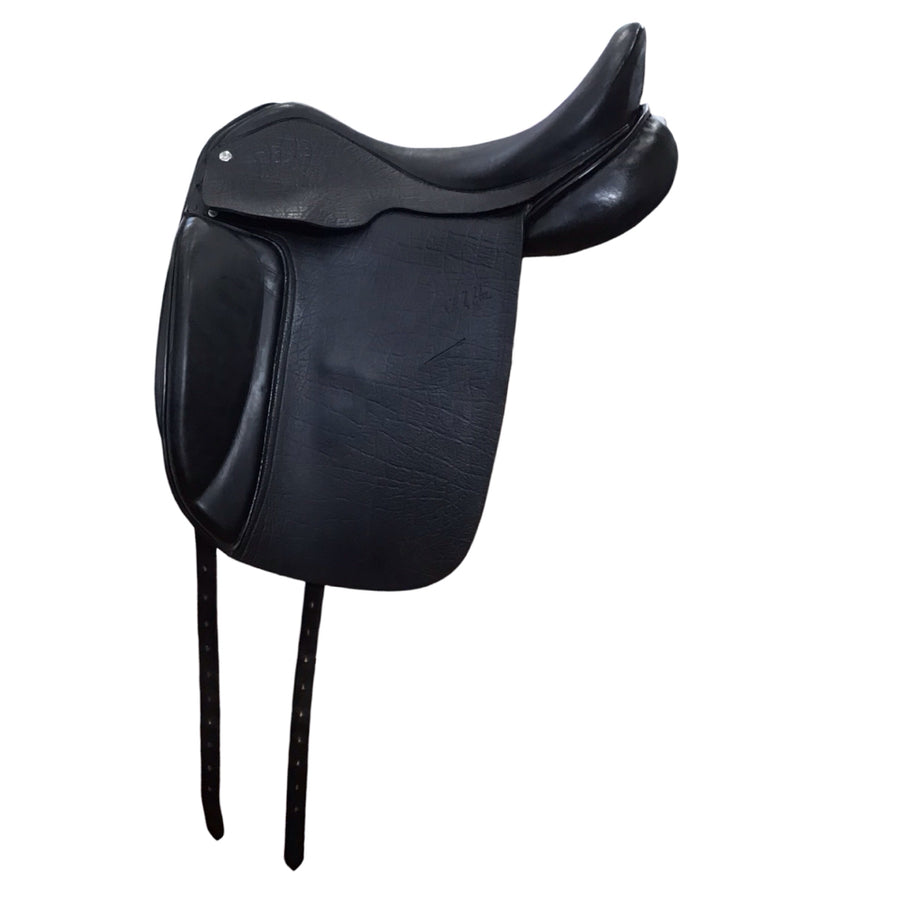A Guide to Tack Cleaning: How to Care for Your Riding Equipment
What you’ll need:
- A sponge
- A soft cloth
- A toothbrush - for the nooks and crannies
- Warm water
- Glycerin soap (a bar is best!)
- If your tack is severely dirty, a specialized leather cleaner
- A high quality leather balsam or conditioner
Step 1: Get that leather clean!
Keeping your tack clean is the first step in assuring its longevity. Water is not the enemy. A glycerin based saddle soap or Castile bar soap is a great way to begin. If you get a lot of lather or foam, your sponge is too wet. You want to use just enough water to lift off the dirt particles. If your tack is very dirty, you may need to rinse/clean the sponge a couple of times as you go, to avoid rubbing dirt back into your leather. If your tack has mud caked on, you can use a soft brush or cloth to remove the mud first. You don’t want to rub abrasive dirt into your tack! Cleaning your tack only takes a couple of minutes and will keep the dirt and sweat from building up. If you skip a wipe-down (or three!) and need to really remove dirt from the leather, use a product that’s specific to tack. Some common brands with effective specialized leather cleaners include Leather Therapy, Belvoir by Carr Day & Martin, Passier, and Effax. Remove the horse sweat – sweat contains salts/ electrolytes that can dry out and corrode leather and metal. Make sure it is rinsed off, not rubbed in.
Be sure to wipe off and rinse your tack gently after using soaps. Buildup of cleaning products on the stitching and around the metal will cause an issue. Stitching can rot and become loose over time. Have you ever seen green gunk around your buckles? This is called verdigris. This is the metal’s reaction to prolonged exposure to the soap, and overtime degrades the integrity of the metal.
Cleaning your tack regularly is vital for keeping it in good condition and increasing the life of your investment. Well-cared for tack not only looks and feels nice, it is safer to use! Improperly cared for equipment is more prone to rust, rot, and breakage. Fortunately, with the right supplies and a little elbow grease, anyone can have soft, supple leather.
Step 2: Restore the moisture!
An important note: leather oil is not the same as a balsam or conditioner! You do not really need to oil your tack. It’s not that oil is bad – in fact, oils are found in all commercial conditioners – but too much oil can be a bad thing… so we recommend avoiding using plain oil, period. Oil can make the leather fibers weak and stretchy, which can cause your tack to break, even under light stress. You might have seen some tack that looks very soft, dark, and floppy. That's what happens when you over-oil it. Instead of oil, you should use a high quality leather balsam or conditioner that has the right balance of oil, fats and waxes. You should only apply a thin layer of it when your leather feels dry or stiff. How often you need to condition your tack depends on the climate where you live, how often you ride, and if your tack is frequently exposed to water, high heat, or other harsh elements.
Step 3: Safety check!
Get in the habit of routinely checking the integrity of your tack like your life depends on it - because it does! Always get rid of unsafe tack. Here’s what to look for:
- Dry rot - The signs for that is cracking and in the later stages, powdery residue. That is the actual leather breaking down to dust! Your strap goods should be supple and fold over with no signs of cracking. If your bridle, reins or stirrup leathers are cracking (sometimes you can hear it!) replace them. Elastic can become dry rotted as well!
- Rusty buckles - especially check your girths where horse sweat routinely comes in contact with the buckles. Rusty buckles can be replaced by a trained leather repair worker.
- Stitching - Thread also suffers from exposure to horse sweat and use. It can disintegrate and come undone. Check the stitching on your girth chapes- those are the small leather pieces holding on the buckles. These often wear with use. Also check the stitching on your stirrup leathers. Make sure the stitches look clean and tight. If you can tear open the stitching, the stirrup leather is dangerous. If they are in good condition, they can be resewn by a trained leather worker.
Sometimes you might see a white film on your tack when you don't use it for a while, especially if the weather has been cooler. This is probably not mold or mildew, but is actually something called "saddler's bloom". It's the natural fat that rises to the surface of high quality leather, especially when it's cold. If you use your tack regularly, the fat gets worked back into the leather. But if you don't, it stays on the surface. You can get rid of it by moving your tack to a warmer place and rubbing it with a soft cloth. If that doesn't work, you can use a hair dryer on low heat to melt the fat, then rub it with a cloth.
Conclusion
Your tack is a major investment. It’s also the one thing that’s keeping you and your horse safely together. Spending the time to find good cleaning supplies and take proper care of your tack ends up saving you time and money in the long run, not to mention helping to ensure the safety of you and your horse!
You should give your tack a basic clean every time you use it and a more thorough going-over and conditioning twice a month. During these bi-monthly cleaning sessions, be sure to check all the stitching, billets, and points where your stirrups, girth, and bit attach. Have your saddle checked annually, and always after a fall, by an experienced saddler.
Do you have any super-tips for cleaning and maintaining your tack? If so, we’d love to hear them! Share with us in the comments box below.


